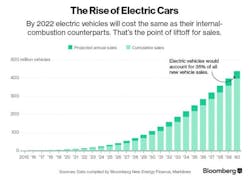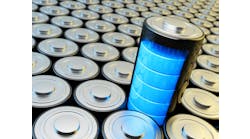Demand for graphite is set to skyrocket 500% because of the rise of electric vehicles (EVs) and U.S. clean energy and electrification efforts under the Biden administration, according to a mining company Lomiko in Quebec City.
The U.S. does not produce domestic graphite, which is used in lithium batteries for electric vehicles, so it relies on imports. China produces 60% of the world’s graphite and was the top source of the mineral for the U.S. in 2019. Mexico and Canada produce only 4% of the world’s graphite.
Lomiko, which focuses on minerals for the green economy, cited a World Bank report that found the world will need more than three billion tons of minerals and metals for wind, solar, geothermal power and energy storage to achieve a below 2°C future. The report “Minerals for Climate Action: The Mineral Intensity of the Clean Energy Transition” also said that the carbon footprint created by their production — from extraction to end use — will account for only 6% of the greenhouse gas emissions generated by fossil fuel technologies.
Lomiko has discovered graphite at its La Loutre Property in Quebec and is now working on a pre-economic assessment of the mine.
In support of its graphite projections, Lomiko pointed to a report by Deloitte that forecasts EVs will likely account for 81% ($25.3 million) of all new vehicles sold by 2030.
Courtesy of Lomiko
The mining company also cited investor and corporate support for electrification of transportation.
For example, Tesla stock saw a dramatic rise in its stock prices in 2020. Volkswagen committed to the Paris Agreement and intends to launch 70 all-electric models resulting in 26 million fully electric cars by 2030. General Motors has committed to 30 new global EV models by 2025. BMW is on track to double its electric and hybrid vehicle sales in 2021 and expects to meet its target of marketing 25 EV models by 2023. More than half of those models will be fully electric.
“Biden will invest $400 billion over 10 years, as one part of a broad mobilization of public investment, in clean energy and innovation. The funds will accelerate the deployment of clean technology throughout the U.S. with a target of reducing the carbon footprint of the U.S. building stock 50% by 2035. The new government will work with governors and mayors to support the deployment of more than 500,000 new public charging outlets by the end of 2030,” Lomiko said in a forward to 2021 developments.





